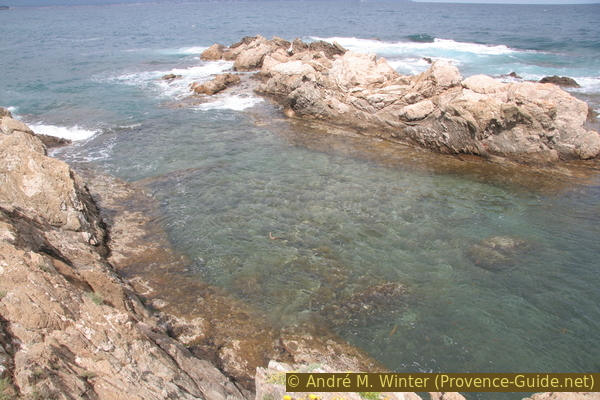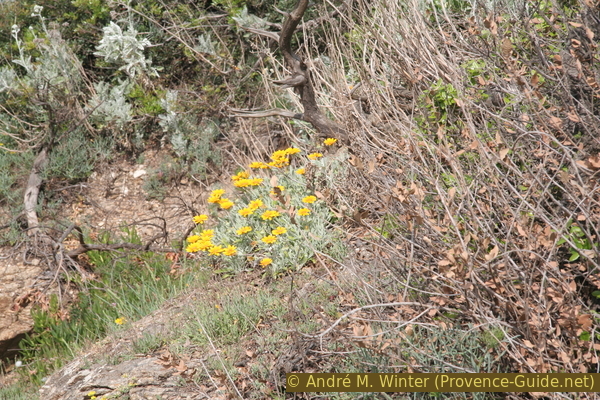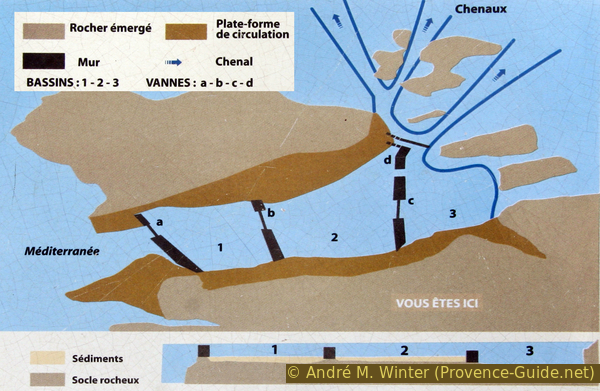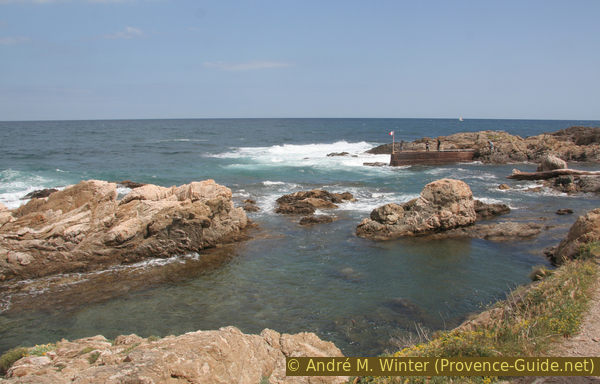Roman fish reservoir near Les Issambres
Cultural and historical site
20 min
view point
Unfortunately, the stretch of coast between Fréjus and Sainte-Maxime is heavily built up right down to the sea shore. Exactly here, however, the Romans also settled and an ancient freshwater basin for fish was found. It is the most complete of its type in Roman Gaul. The ancient Romans were great lovers of seafood. That is why rich settlers had separate basins built in the coastal area in order to keep the fish caught therein fresh. However, it can also be an artisanal facility for the production of garum sauce.
The remains of the Vivier maritime de la Gaillarde can now be seen almost entirely under water in a natural bay. It is located not far from the coastal road at cape Pointe de la Calle. The place is not suitable for bathing, there are not too many people here even in summer.
No reproduction is permitted without the written consent of the author. (id1913)

Roman fish reservoir near Les Issambres
Access by public transport
Bus line 876 runs around 12 times a day between Saint-Tropez, Sainte-Maxime, Fréjus and Saint-Raphaël. The timetable is available under Zou! (only french). Either way, get off at the Beaumont stop, stay on the sea side or change to it and take the lane towards the sea for a quick way to avoid traffic. The neighborhood here is called the Corniche des Cigales de Ferréol. Back there, turn left and to a somewhat overgrown parking area. Turn then right and continue as described from the parking lot below.
Access by car
Coming from Saint-Raphaël and Fréjus, take the D559 towards Sainte-Maxime and Saint-Tropez. In the municipality of Roquebrune, you will pass the bay with the Port Ferréol and, in the next bend to the right, look out for the Vivier Maritime Gallo-Romain sign.
Coming from Toulon or Saint-Tropez, head east towards Sainte-Maxime, you will pass Calanque de Bonne Eau (Restaurant Le Cercle) and after the following straight section, before a left turn, there is a slip road with signposts for Vivier Maritime Gallo-Romain.
You should avoid the D559 road between 10 a.m. and 8 p.m. in summer, you are then constantly stuck in traffic between St. Tropez and Ste. Maxime.
Parking site
There is space for around 10 vehicles along the short access road. It's better to come in the off-season.
Access by short walk
The road ends soon and we continue on a footpath in the same direction towards the sea. Here we are on a short stretch of the coastal path and we're going around a house in the coastal area. When the path leads to the right, we are already in front of the ancient freshwater pool!
You can continue the walk along the coast. After a few minutes you will be back on the Corniche des Cigales de Ferréol. Then you either come back to the bus stop or to the parking lot. The map on this page shows this small circuit.
No reproduction is permitted without the written consent of the author. (id1915)

Treasure flowers
Description
It is a natural rocky cove between 5 and 12 meters wide. The complex consists of three pools, some carved out of the rock and some built into it. Some of the separating walls are still visible today just below the waterline. The water was regularly renewed by means of water gutters and bronze sliders. Originally there was a paved path about 2 meters wide around the pool.
This fresh water basin probably belongs to a Gallo-Roman villa (1st-3rd centuries) higher up in the Vallon de la Gaillarde area. It is possible that it was not just a basin for briefly preserving freshly caught fish, but a garum production facility. A cistern was found on the neighboring property of the Roman villa, where this fermented fish sauce could be detected.
No reproduction is permitted without the written consent of the author. (id1910)

Scheme of the roman fresh water basin near Les Issambres
No reproduction is permitted without the written consent of the author. (id1911)

Rocky bay at Pointe de la Calle